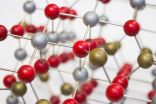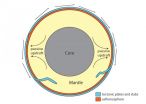(Press-News.org) Cholera is caused when the bacterium Vibrio cholerae infects the small intestine, resulting in severe diarrhea and vomiting, which can result in dehydration and death. The main treatment involves oral rehydration therapy, where the patient drinks water mixed with salts and glucose. But although proven to be enormously effective, there are concerns that the glucose content might actually worsen the disease. EPFL scientists have now shown that this is indeed the case, as glucose increases the toxicity of the cholera bacterium, whereas replacing glucose with starch can reduce its toxicity by almost 75%. Their work is published in PLOS Neglected Tropical Diseases.
Cholera Treatment: Effective, but Could Be Improved
The usual treatment for cholera comes in the form of "oral rehydration therapy" packs. Essentially, it involves feeding the patient water mixed with electrolyte salts and glucose. The idea is to replace the patient's lost fluids and essential salts, while the glucose acts as a source of carbon and helps the intestine to absorb the salts more efficiently. The patient continues the therapy until the infection has ran its course.
Up to half of cholera patients would die without treatment, but oral rehydration therapy has been shown to lower the deaths to around 1%. However, there are concerns that using glucose in the rehydration mixture can actually exacerbate the disease. The problem is that the infecting bacterium also consumes glucose, and that increases the expression of its genes that make it toxic. On the other hand, some field studies have shown that using more complex carbon sources, like starch from rice powder, might be more effective. Despite this, there has never been a decisive study linking oral rehydration recipes with their effect on how the disease spreads.
The cholera bacterium, Vibrio cholerae, infects humans by releasing a protein called the "cholera toxin". Consequently, regulating the genes that produce the cholera toxin can either increase or decrease the bacterium's capacity to spread disease.
Alternatives to Glucose
Melanie Blokesch and Andrea Rinaldo at EPFL have now correlated data from a recent cholera outbreak in Haiti with the effectiveness of oral rehydration therapy. Blokesch's lab grew the cholera bacterium with different sugars (e.g. glucose, sucrose) and starch from potatoes and rice to see how each would affect the cholera toxin genes.
The scientists found that both the activity of the genes, as well as the production of the cholera toxin itself were increased when the bacterium was fed with glucose, but they were considerably decreased when it was fed with starch from rice. Although the explanation for this is complicated, one of the reasons is that the type of sugar available (e.g. glucose, starch etc.) to the bacterium affects the mechanisms that regulate the activity of its toxin-producing genes. Ultimately, this effect influences the bacterium's ability to infect humans.
The team of Andrea Rinaldo focused on matching this data to the actual cholera epidemics in Haiti. Using data from the outbreak of cholera that started in 2010 in the region, they developed a mathematical model of the disease's epidemiology. They then modified the model to include oral rehydration therapy based on rice starch instead of glucose. The results showed that using this alternative approach could have a 30% reduction of cholera cases (375'000 instead of 520'000 cases) on the island within the first 14 months of the epidemics.
The results feed into the current discussion of cholera treatment, and strongly suggest a review of current approaches. "Of course, we're not saying 'stop doing oral rehydration therapy with glucose right away' because it works so well," says Melanie Blokesch. "But still, the data suggests that the regimen can be significantly improved, and that the community needs to start discussing this possibility again - especially in areas endemic to cholera."
INFORMATION:
This work represents a collaboration between EPFL's Laboratory of Molecular Microbiology (Melanie Blokesch) and Laboratory of Ecohydrology (Andrea Rinaldo), with the Milan Polytechnic and the University of Padova.
Reference
Kühn J, Finger F, Bertuzzo E, Borgeaud S, Gatto M, Rinaldo A, Blokesch M. Glucose- but not rice-based oral rehydration therapy enhances the production of virulence determinants in the human pathogen Vibrio cholerae. PLOS Neglected Tropical Diseases DOI: 10.1371/journal.pntd.0003347
A public summer jobs program for high school students from disadvantaged neighborhoods in Chicago reduced violent crime arrests by 43 percent over a 16-month period, according to a new study from the University of Chicago Crime Lab and the University of Pennsylvania. The randomized controlled trial is published in the journal Science.
This research comes as youth employment in the summer months, when teenagers are most likely to work, is near a 60-year low. The challenges facing minority and low-income youth are particularly stark; the 2010 employment rate for low-income ...
Magnetite (or Fe3O4) is an elaborate kind of rust - a regular lattice of oxygen and iron atoms. But this material plays an increasingly important role as a catalyst, in electronic devices and in medical applications.
Scientists at the Vienna University of Technology have now shown that the atomic structure of the magnetite surface, which everybody had assumed to be well-established, has in fact been wrong all along. The properties of magnetite are governed by missing iron atoms in the sub-surface layer. "It turns out that the surface of Fe3O4 is not Fe3O4 at all, but ...
Highly expressed in the testis, a gene named Ranbp9 has been found to play a critical role in male fertility by controlling the correct expression of thousands of genes required for successful sperm production. A group of researchers led by Professor Wei Yan, at the University of Nevada School of Medicine has discovered that a loss of function of Ranbp9 leads to severely reduced male fertility due to disruptions in sperm development. A paper reporting this finding was published in PLOS Genetics on December 4, 2014.
Male infertility affects 1 out of 20 men of reproductive ...
A genetic variant which causes smokers to smoke more heavily has been shown to be associated with increased body mass index (BMI) - but only in those who have never smoked, according to new research led by the University of Bristol, UK and published today in PLOS Genetics.
It is likely that this finding has not come to light before because it has been masked by the effect of smoking, which acts to reduce BMI.
Professor Marcus Munafo from Bristol's School of Experimental Psychology and colleagues studied a variant in the CHRNA5-A3-B4 gene cluster which is known to increase ...
Researchers from the Medical Research Council Lifecourse Epidemiology Unit (MRC LEU), University of Southampton have shed new light on how grip strength changes across the lifespan. Previous work has shown that people with weaker grip strength in midlife and early old age are more likely to develop problems, such as loss of independence and to have shorter life expectancy. However, there is little information on what might be considered a normal grip strength at different ages.
This latest research, which combined information from 12 British studies and is published in ...
An international team, including scientists from DESY, has caught a light sensitive biomolecule at work with an X-ray laser. The study proves that X-ray lasers can capture the fast dynamics of biomolecules in ultra slow-motion, as the scientists led by Prof. Marius Schmidt from the University of Wisconsin-Milwaukee write in the journal Science. "Our study paves the way for movies from the nano world with atomic spatial resolution and ultrafast temporal resolution", says Schmidt.
The researchers used the photoactive yellow protein (PYP) as a model system. PYP is a receptor ...
The temperature of the seawater around Antarctica is rising according to new research from the University of East Anglia.
New research published today in the journal Science shows how shallow shelf seas of West Antarctica have warmed over the last 50 years.
The international research team say that this has accelerated the melting and sliding of glaciers in the area, and that there is no indication that this trend will reverse.
It also reveals that other Antarctic areas, which have not yet started to melt, could experience melting for the first time with consequences ...
CORVALLIS, Ore. - Scientists may have solved a long-standing enigma known as the African Humid Period - an intense increase in cumulative rainfall in parts of Africa that began after a long dry spell following the end of the last ice age and lasting nearly 10,000 years.
In a new study published this week in Science, an international research team linked the increase in rainfall in two regions of Africa thousands of years ago to an increase in greenhouse gas concentrations. The study was funded by the National Science Foundation and the U.S. Department of Energy.
The ...
A long-held assumption about the Earth is discussed in today's edition of Science, as Don L. Anderson, an emeritus professor with the Seismological Laboratory of the California Institute of Technology, and Scott King, a professor of geophysics in the College of Science at Virginia Tech, look at how a layer beneath the Earth's crust may be responsible for volcanic eruptions.
The discovery challenges conventional thought that volcanoes are caused when plates that make up the planet's crust shift and release heat.
Instead of coming from deep within the interior of the ...
VIDEO:
Vanderbilt biologist Kenneth Catania describes his discovery that the electroshock system used by the electric eel to detect and immobilize prey is uncannily similar to the Taser.
Click here for more information.
The electric eel - the scaleless Amazonian fish that can deliver an electrical jolt strong enough to knock down a full-grown horse - possesses an electroshock system uncannily similar to a Taser.
That is the conclusion of a nine-month study of the way in which ...


